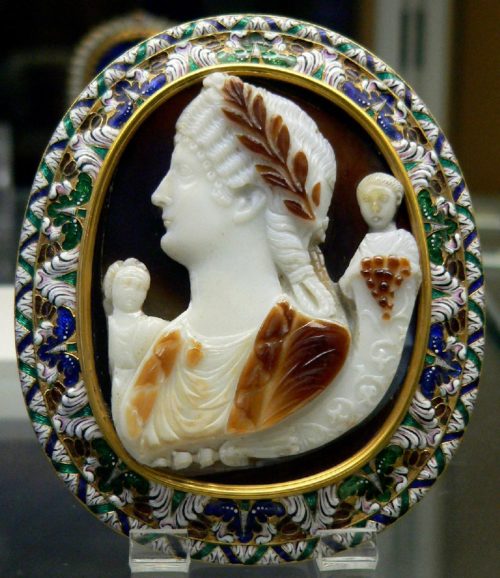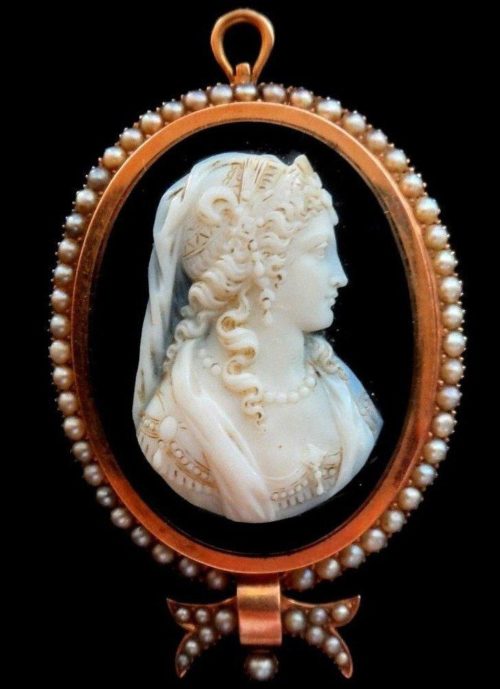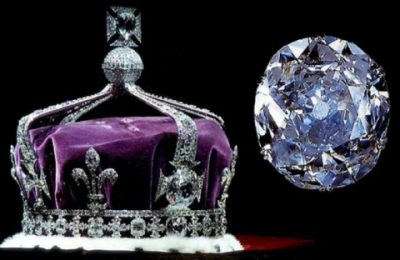Cameo is a miniature piece of jewelry for luxury ladies
Cameo is a kind of jewelry (gems) in the form of a convex bas-relief carved on a precious stone or a mollusk shell. A cameo is most often a miniature portrait of a person that is encrusted in a brooch or inserted into a medallion. When making such jewelry, the artist usually uses stones of contrasting colors.
Cameo is the opposite of intaglio, in which the jeweler carves an in-depth image in the stone. Since ancient times, the technique of intaglio has been used by masters to make signet rings for government officials and clergymen.

Features of making cameos
In ancient times, artists made cameos from marble, ivory or semi-precious stones with a multilayer structure (onyx, agate, rock crystal or chalcedony). The lower dark layer served as a background for the light main image. Much later, craftsmen learned to create more complex jewelry from two contrasting colors of minerals glued together.
In modern arts and crafts, jewelers often use cheap colored glass to make cameos. Products created with the help of special ultrasonic equipment do not have special artistic value, unlike the masterpieces of the ancient era. And many more artists resort to a simple technical trick – they use paints to enhance the effect of color contrast.

Cameo history
The history of cameos dates back to ancient times. Already in the 3rd century BC in Ancient Greece, local artists learned how to make not only first-class jewelry, but also dishes with carved bas-relief ornaments.
The traditions of the Greek masters were inherited by the jewelers of Ancient Rome. Cameos became especially popular during the reign of Augustus and Claudius. But after the collapse of the Roman Empire at the end of the 5th century, the ancient art of processing precious stones fell into decay for many centuries.
Only in the era of the Late Renaissance at the beginning of the 18th century, the cameo again became a popular piece of jewelry among the nobility. In England, the fashion trend for wearing gems was established during the reign of George III in the late 1780s. And in the Victorian era, until the early twentieth century, cameos were at their peak in the British Isles. In addition to gems made from semi-precious stones, products made from the shells of exotic sea molluscs were in great demand among the rich English.
An ardent admirer of carved jewelry was Napoleon Bonaparte. The cameo was an important element of his ceremonial attire at his coronation in December 1804.
The habitual way of life of the European elite with luxurious balls and secular receptions has irrevocably gone into the past with the end of the First World War. Since that time, the cameo ceased to be an elite piece of jewelry for the nobility and gradually began to lose popularity among fashionistas.
Nowadays, elaborate gems are rarely found in the decoration of luxurious women. Modern representatives of the fairer sex, choosing outfits for special events, prefer less pretentious accessories. But the magnificent cameos, created by skilled craftsmen, still evoke feelings of sincere admiration among art connoisseurs.
Famous Cameo Artists
The names of most of the ancient masters who created unique cameos are irretrievably lost for posterity. Fortunately, information on a small fraction of noteworthy artists remains available to a wide range of art lovers. Among them:
Tommaso Saulini is the most famous cameo master of the 19th century. Even the Queen of England and members of the Russian royal family were his customers. Saulini’s masterpieces today cost a lot of money, and numerous imitators unsuccessfully try to forge them in order to earn a decent fortune on the name of the master.
Luigi Saulini is the son and successor of Tommaso’s business. Together with his father, he was an ardent popularizer of cameos and took part in numerous Universal Exhibitions. Luigi spent many years honing his skills to reach the level of ancient artists and he succeeded.
Giovanni Noto is the most famous cameo painter of the 20th century, nicknamed “Michelangelo of the Chisel”. For many years, Noto created unique masterpieces commissioned by the Italian government. Which became official gifts to important foreign persons. The great master founded his own school at the Roberta jewelry company in Torre del Greco and generously shared his knowledge with his students.








